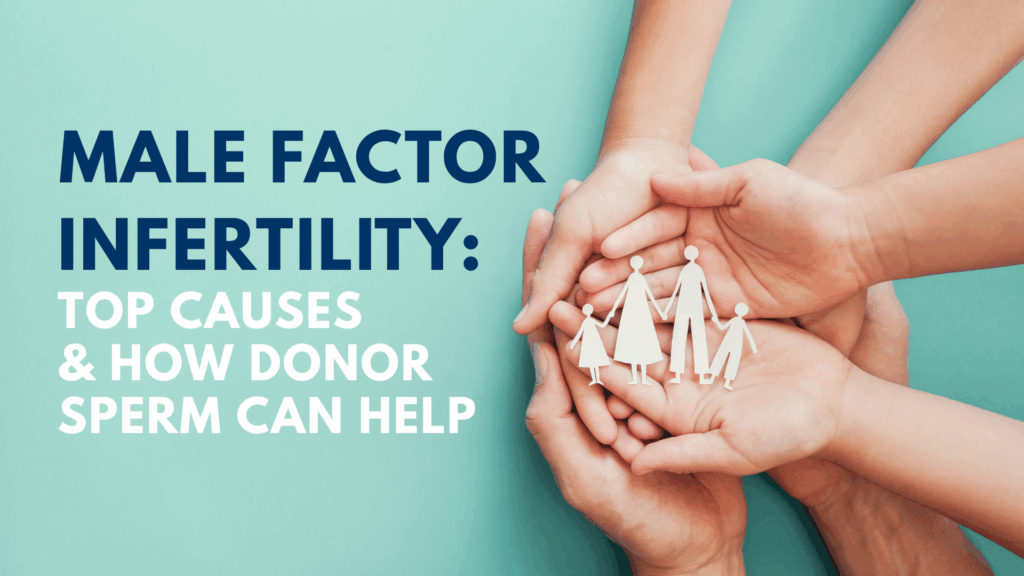How Long Should it Take to Get Pregnant?
New Mom, Christina Barnes, RN, shares how long it should take to get pregnant

Many couples are surprised to discover that getting pregnant is not always a quick and easy process. We’ve all heard stories of accidental pregnancies while on birth control and the couple who gets pregnant three weeks after stopping the pill. As a healthy woman in my early 30s, I assumed that as soon as my husband and I stopped using birth control I would become pregnant. From an early age, I thought that if I had unprotected sex I would immediately become pregnant, so for most of my adult life, I actively tried to prevent pregnancy. Once we decided to stop birth control I was frustrated and extremely disappointed when, for the next 5 months, I continued to have one negative pregnancy test after another. I felt like everyone around me was pregnant and having babies; I wondered why it wasn’t as easy for us to conceive as it seemed to be for everyone else. We finally conceived at month 6, and while this felt like a painfully long process, this timeline is actually completely normal.
What is Normal Fertility?
In the first 6 months of attempting pregnancy, approximately 80 percent of couples will conceive. During those first 6 months, a healthy fertile couple has about a 15 to 20 percent chance of conception each month. With a 20 percent chance of conception each month of trying, it statistically makes sense that it would take longer than one or two months for most couples to conceive. After these first 6 months, the probability of becoming pregnant in a single cycle decreases as the length of time without conception increases.
In the first 12 months of trying to get pregnant, approximately 85 percent of couples will conceive. Of the remaining couples who have not conceived, about half of those will spontaneously conceive within 36 months. I wish I had known this while I was trying to get pregnant; these numbers put the entire timeline into perspective. The majority of couples will conceive within a year, and those that do not may take up to 36 months. So while it may seem like everyone you follow on social media effortlessly becomes pregnant, the majority of people need more than a few months to conceive.
What is Infertility?
You’ve been trying to conceive for what feels like forever and you still aren’t pregnant. At what point should you speak to your OB-GYN or primary care doctor about infertility treatment? A couple should be evaluated for infertility if they do not conceive after 1 year of regular unprotected sex in women under age 35, and after 6 months of regular unprotected sex in women age 35 years and older. Women with known risk factors for infertility, such as a history of pelvic inflammatory disease or endometriosis, may start infertility evaluation sooner than 6 months or 1 year.
In 10 percent of cases of infertility, the male is the only known cause for the couple’s infertility. The most common cause for male infertility, about 65 to 80 percent of cases, is a testicular defect that affects the creation of sperm. Other causes for male infertility include endocrine disorders (such as hypogonadism) and abnormal sperm mobility. About 10 to 20 percent of infertile males will have a normal semen analysis and no identifiable cause of infertility.
Optimizing Fertility
The period during a woman’s cycle where there is a chance of conception, also known as the fertile period, is only about 6 days long. This fertile period is approximately 5 days before ovulation and the day of ovulation. The highest chance of conception occurs when a couple has sex 1 to 2 days before ovulation and on the day of ovulation. Women can predict when they will ovulate by tracking changes in their cervical mucus, measuring luteinizing hormone (LH) in the urine, tracking body temperature, or using a variety of cycle-tracking phone apps and devices. I personally used a simple phone app to track my cycle and temperature for the first 5 months, and then on month 6, I added LH urine tests. I really liked the LH urine tests because they were simple to use and told me when my LH was peaking, indicating my most fertile time. I peed on a stick every day for about a week that looked exactly like a pregnancy test. When my LH was highest, meaning I was in my fertile days, the test showed a smiley face. With the positive LH test, I knew that I was in my fertile window, and my husband and I could try on that day and for a few days afterward.
Medical studies show that couples with the highest rates of pregnancy have sex every one to two days throughout the month. While this is ideal for conception, many couples may find this schedule challenging with the demands of a busy life and family. Fortunately, having sex regularly 2 to 3 times per week should ensure that sex falls during the fertile period. When I saw my OB-GYN discuss stopping birth control, she recommended that I start by following this 2 to 3 times per week schedule. She told me that I could track my ovulation if I wanted, but if my husband and I just had regular sex that eventually it would happen. I unfortunately am not the type of person who can just sit back and see what happens, so I tried to follow this schedule while tracking my ovulation at the same time. The process of trying to conceive was, at times, exhausting and emotionally draining, but knowing that the majority of couples actually take more than a few months to conceive helped to alleviate some stress. The pressure to become pregnant can feel heavy and lonely at times, but don’t forget to enjoy the time with your partner and take care of yourself.
Fairfax Cryobank’s passion and purpose are to help you grow your family with donor sperm. Learn more about Fairfax’s resources for prospective parents.







